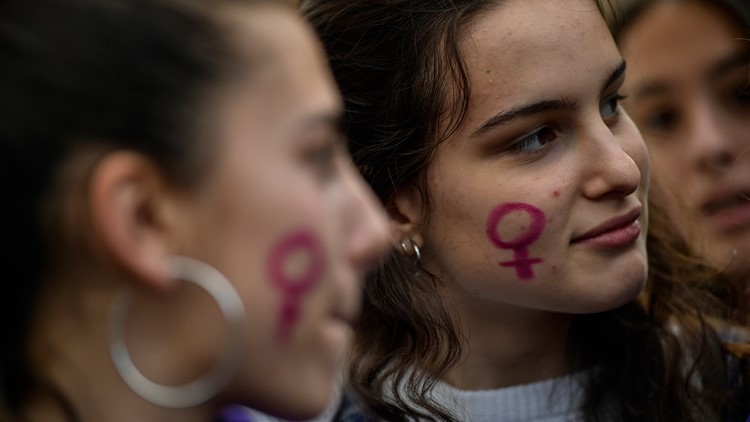The number sounds shocking. But, the World Economic Forms says despite some progress, we still have a long way to go to close the global gender gap.
The WEF Global Gender Gap Report has increased the estimated time it will take to close the gender gap from 99.5 years to 135.6 years.
The report looks at four main categories in 156 different countries.
While women have made strides in the fields of education and health, they still face hurdles in achieving economic opportunities in the workplace and are majorly lagging in political representation.
And the report says that the COVID-19 pandemic has only served to widen the gender gap in all of these fields.
Political empowerment
This remains the category with the largest gender gap.
Some smaller countries have successfully put more women in office, but are overshadowed by larger countries that have seen fewer women hold positions like parliament seats or prime minister.
As of January 2021, 81 countries have never had a woman as head of state, according to the report. The WEF estimates that it will take 145.5 years to attain gender parity in politics.
Economic opportunity
This is the second-largest gap of the four categories.
The WEF analyzed the economic gender gap based on two opposing forces. One being that the proportion of women among skilled professionals is increasing along with progress toward wage equality. However, the other trend is that there is still a lack of women in leadership positions, with women holding just 27 percent of manager roles, according to the WEF.
Data also shows that these numbers have probably worsened due to the pandemic. The WEF estimates that it will take 267.6 years to close the gender gap in economic participation.
Education and Health
The gender gap in these last two categories is nearly closed, although the WEF says the pandemic will likely cause future disruptions.
37 countries have reached gender equality in education, and it will take an estimated 14.2 years for other countries to catch up, according to the WEF report.
In health, 96 percent of the gender gap has been closed, which is a decline from last year's report. The time it will take to close this gap remains unclear due to factors like the pandemic and variations in quality of income, geography, race and ethnicity.
The impact of COVID-19
The WEF puts it simply; the pandemic has had a more negative impact on women than men.
Data from the International Labour Organization suggests that 5 percent of employed women lost their jobs during the pandemic compared to 3.9 percent of men, the WEF says.
The WEF says industries like software and IT, financial services, healthcare, and manufacturing are making progress toward more female representation. But, industries with higher female representation, like media and communication, have been more "directly disrupted by lockdowns," according to the report.
Data from Ipsos also says that when care establishments closed, housework and childcare responsibilities fell disproportionately on women, the WEF says. The report says that this contributed to higher levels of stress and lower levels of productivity for women.
The WEF also looked at LinkedIn data which it says shows that women are being hired at a slower rate in multiple industries and are less likely to be hired for leadership roles. This could result in a reversal of up to two years’ progress, according to the report.
So how do we work to close the gap?
The WEF says gender-positive recovery policies and practices can help us work toward equality for men and women.
First, the report recommends investments into the care sector and giving equitable access to childcare leave for men and women.
Second, WEF says company policies need to be proactive in overcoming occupational segregation by gender.
And third, the WEF suggests tailoring managerial training to teach unbiased unbiased hiring and promotion practices.
Iceland was named the most gender-equal country in the world by the WEF for the twelfth time. Based on the report, Western Europe was named the best-performing region while North America was deemed "most-improved." The Middle East and North Africa region continues to have the largest gender gap, the WEF says.
You can find more information on where different countries rank in the full Global Gender Gap Report 2021.
- Here's why you can contract COVID-19 even after getting the vaccine
- CDC relaxes gathering guidelines for fully vaccinated people
- 53 arrested, 165 fined at illegal street racing event that drew 300 people in Lakeland
- Florida troopers help deliver baby on side of the road
- Derek Chauvin trial: Videos from Cup Foods, police body cameras shown in court
- With a new-look rotation, can the Rays make a return to the World Series in 2021?
- How to avoid falling for a prank on April Fools' Day
►Breaking news and weather alerts: Get the free 10 Tampa Bay app
►Stay In the Know! Sign up now for the Brightside Blend Newsletter



